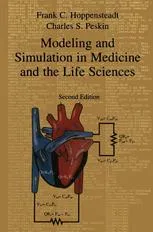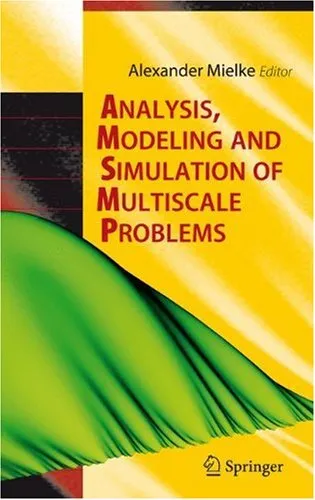Design and Analysis of Experiments
4.6
بر اساس نظر کاربران

شما میتونید سوالاتتون در باره کتاب رو از هوش مصنوعیش بعد از ورود بپرسید
هر دانلود یا پرسش از هوش مصنوعی 2 امتیاز لازم دارد، برای بدست آوردن امتیاز رایگان، به صفحه ی راهنمای امتیازات سر بزنید و یک سری کار ارزشمند انجام بدینRelated Refrences:
معرفی کتاب "Design and Analysis of Experiments"
کتاب Design and Analysis of Experiments اثری برجسته و مرجع در حوزه طراحی آزمایشها و تحلیل آنها است که توسط Klaus Hinkelmann و Oscar Kempthorne نوشته شده است. این کتاب یکی از منابع اصلی در زمینه طراحی آزمایشها (Design of Experiments) میباشد که سالهاست توسط محققان، دانشجویان و متخصصین آمار و علوم مرتبط استفاده میشود.
با تمرکز بر فهم دقیق مفاهیم طراحی آزمایش و ارائه دیدگاههایی عملی برای تحلیل آماری دادهها، این کتاب یکی از کتب بیبدیل در حوزه خود به شمار میآید. این اثر به زبانی علمی اما قابل فهم نوشته شده و با مثالهای متنوع، اصول کاربردی طراحی و تحلیل آزمایشات را پوشش میدهد. همچنین، مرجع کلیدی برای دانشجویان رشتههای آمار، مهندسی، زراعت، و بسیاری از رشتههای علوم تجربی محسوب میشود.
خلاصه کتاب
کتاب Design and Analysis of Experiments با هدف ارائه چارچوبی کامل برای درک شیوههای طراحی آزمایشها و تحلیل آنها تدوین شده است.
این کتاب ابتدا به معرفی اصول پایهای طراحی آزمایشها میپردازد، از جمله اهمیت تصادفیسازی (randomization)، تکرار (replication)، و بلوکبندی (blocking). سپس نویسندگان به معرفی انواع طرحهای آزمایشی پرداختهاند، نظیر:
- Completely Randomized Designs (CRD)
- Randomized Block Designs (RBD)
- Factorial Experiments
- Split-Plot Designs
- Nested Designs
در بخشهای بعدی، تمرکز بر روشهای تحلیل آماری دادههای بدست آمده از این آزمایشها است و روشهایی نظیر ANOVA (تحلیل واریانس) با جزییات شرح داده شدهاند. این کتاب همچنین به خوانندگان کمک میکند تا با مفاهیم تعامل (interaction) بین عوامل (factors) و روشهای مختلف برای بهینهسازی طرحهای آزمایشی آشنا شوند.
از دیگر مباحث کلیدی ارائه شده میتوان به مطالعه تاثیرات متغیرهای تصادفی و ثابت، ارزیابی اهمیت پارامترها، و مدلهای خطی اشاره نمود.
نکات کلیدی و آموختهها
محتوای کتاب سرشار از نکات عملی و مفاهیم کلیدی در حوزه طراحی و تحلیل آزمایشات است. در ادامه برخی از مهمترین مطالب کتاب آورده شده است:
- اهمیت اصول پایهای طراحی آزمایش نظیر تصادفیسازی و تکرار در اعتبار بخشیدن به نتایج آماری.
- تفکیک طرحهای آزمایشی مختلف و درک جایگاه استفاده از هر یک.
- روشهای مدلسازی و تحلیل نتایج آزمایشها برای کسب اطلاعات دقیقتر.
- درک تاثیر تعاملات بین عوامل بر متغیرهای پاسخ در آزمایشها.
- یادگیری استفاده از نرمافزارها و ابزارهای آماری برای اجرای تحلیلهای پیچیده آماری.
نقلقولهای معروف از کتاب
"The goal of experimental design is to improve precision while minimizing costs and effort."
"Randomization and replication are the cornerstones of successful experimentation."
"Understanding factorial effects is crucial in determining how variables interact with each other."
چرا این کتاب اهمیت دارد؟
کتاب Design and Analysis of Experiments اثری بسیار مهم و تأثیرگذار در زمینه طراحی و تحلیل آزمایشها محسوب میشود. دلایل اهمیت آن عبارتند از:
- این کتاب دانش پایه و مفاهیم کاربردی را در زمینه طراحی و تحلیل دادههای آزمایشی فراهم میکند.
- به عنوان یکی از معتبرترین منابع آموزشی در دانشگاهها و پژوهشهای پیشرفته استفاده میشود.
- مبنای بسیاری از نرمافزارهای آماری و تکنولوژیهای پیشرفته در تحلیل دادههای آزمایشی است.
- نویسندگان این کتاب از برجستهترین متخصصین حوزه آمار و طراحی آزمایشها هستند که تخصص و تجربه آنان به طور دقیق در متن کتاب منعکس شده است.
خواندن این کتاب به هر شخصی که در زمینه تحقیق، آمار یا علوم تجربی فعالیت میکند، توصیه میشود، چرا که یادگیری اصول آن تأثیری مستقیم بر کیفیت نتایج و پروژههای تحقیقاتی دارد.
Introduction to "Design and Analysis of Experiments"
"Design and Analysis of Experiments" by Klaus Hinkelmann and Oscar Kempthorne is a seminal work in the field of statistical methodology. Through its detailed approach to experimental design and analysis, the book provides an indispensable resource for researchers, statisticians, and students striving to understand the underlying principles and applications of experiment planning and execution. From theoretical foundations to practical implementation, this book sets a benchmark for clarity, precision, and depth in the topic of designing experiments.
Detailed Summary of the Book
The book is structured to serve as a comprehensive guide to the multifaceted discipline of experimental design and its statistical interpretations. It begins by introducing foundational principles, such as randomization, replication, and blocking, which are essential to the formulation of unbiased and accurate experiments. The earlier chapters delve into the historical context of experimentation, showcasing how systematic inquiry evolved into the rigorous analytical methods we use today. This foundation is critical for understanding the theoretical framework that underpins experimental design.
As the book progresses, it explores various types of experimental designs, including completely randomized designs (CRD), randomized block designs (RBD), factorial experiments, and Latin square designs. It provides detailed explanations and examples, emphasizing the specific applications and nuances of these designs. Statistical models are introduced to complement these designs, allowing readers to analyze experimental data effectively.
A significant portion of the book is dedicated to factorial experiments, highlighting their importance in understanding the interactions between variables. Moreover, advanced topics, such as split-plot designs and response surface methodology, are covered in later sections to provide deeper insights into complex experimental setups. Throughout, the authors stress the importance of efficiency, accuracy, and resource optimization in experiment design, making the book immensely practical and applicable to real-world scenarios.
Key Takeaways
- Understand the core principles of experimental design, including randomization, replication, and blocking.
- Learn about the appropriate use of different experimental designs, such as completely randomized and factorial designs, to suit varying research contexts.
- Gain proficiency in statistical analysis techniques to interpret experimental data accurately and effectively.
- Discover how to manage resources efficiently while improving the reliability and validity of experimental results.
- Explore advanced concepts like confounding, interaction effects, and response surface methodology.
Famous Quotes from the Book
"The design of the experiment should ensure that statistical analysis will yield accurate and precise conclusions with the smallest possible expenditure of resources."
"Often, good design is more about asking the right questions and framing the problem appropriately than simply gathering data."
"Factorial designs not only economize resources but also reveal the interactions between factors, which are often more instructive than the main effects themselves."
Why This Book Matters
"Design and Analysis of Experiments" is more than just a textbook; it is a cornerstone reference for anyone involved in statistical experimentation. The book stands out for its balance between theory and application, catering to both beginners and advanced researchers. For students, it serves as an accessible educational tool, while professionals in fields like agriculture, engineering, medicine, and social sciences rely on it for guidance in planning and analyzing experiments.
In a world increasingly driven by data and evidence-based decision-making, the ability to design effective experiments is an invaluable skill. By providing the tools needed to conduct statistically sound and ethically responsible research, this book empowers readers to tackle real-world problems with confidence and competence. Its breadth and depth make it an enduring classic and a must-have resource for anyone in the field of experimental design and analysis.
دانلود رایگان مستقیم
شما میتونید سوالاتتون در باره کتاب رو از هوش مصنوعیش بعد از ورود بپرسید
دسترسی به کتابها از طریق پلتفرمهای قانونی و کتابخانههای عمومی نه تنها از حقوق نویسندگان و ناشران حمایت میکند، بلکه به پایداری فرهنگ کتابخوانی نیز کمک میرساند. پیش از دانلود، لحظهای به بررسی این گزینهها فکر کنید.
این کتاب رو در پلتفرم های دیگه ببینید
WorldCat به شما کمک میکنه تا کتاب ها رو در کتابخانه های سراسر دنیا پیدا کنید
امتیازها، نظرات تخصصی و صحبت ها درباره کتاب را در Goodreads ببینید
کتابهای کمیاب یا دست دوم را در AbeBooks پیدا کنید و بخرید
1366
بازدید4.6
امتیاز0
نظر98%
رضایتنظرات:
4.6
بر اساس 0 نظر کاربران
Questions & Answers
Ask questions about this book or help others by answering
No questions yet. Be the first to ask!














